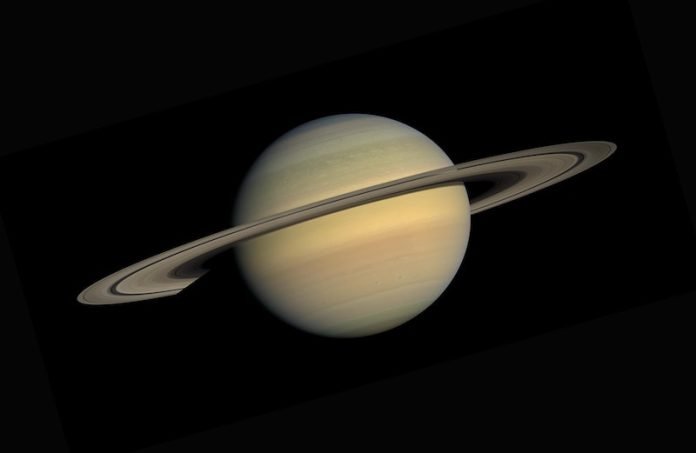
Saturn’s rings are a beautiful mystery that has captivated scientists and stargazers for centuries.
A new breakthrough in our understanding of these celestial bodies has been made by Sascha Kempf, a physicist from the University of Colorado Boulder.
His team’s research indicates that Saturn’s rings might be significantly younger than we previously thought. This groundbreaking study was published on May 12 in the journal Science Advances.
Saturn’s Rings: A Brief History
Saturn’s rings have been a source of fascination since they were first observed by Italian astronomer Galileo Galilei in 1610.
At that time, the technology wasn’t advanced enough to fully understand what these features were. Galileo’s sketches of the rings resembled handles on a water jug.
Over time, our understanding of the rings evolved. In the 1800s, Scottish scientist James Clerk Maxwell proposed that the rings were not solid structures but rather composed of countless individual pieces.
Today, we know that Saturn has seven distinct rings made up of countless chunks of ice. Some of these are no bigger than a boulder you might find here on Earth.
Unraveling the Mystery: The Age of Saturn’s Rings
For a long time, scientists believed that Saturn’s rings were as old as the planet itself, approximately 4.5 billion years.
But Kempf and his team’s research suggests that the rings are much younger, with an estimated age of no more than 400 million years.
How did they come to this conclusion? Their answer lies in dust.
Our solar system is constantly bombarded with tiny grains of rocky material. This dust can settle on various celestial bodies, including the ice that comprises Saturn’s rings.
By examining the rate at which this dust accumulates, Kempf’s team was able to estimate the age of the rings.
The Role of the Cassini Spacecraft
To gather the data needed for their research, Kempf’s team relied on the late Cassini spacecraft.
From 2004 to 2017, Cassini traveled around Saturn, collecting samples with its onboard instrument, the Cosmic Dust Analyzer.
Over 13 years, the spacecraft managed to gather only 163 dust grains that originated from beyond Saturn’s immediate neighborhood.
Despite the seemingly small sample size, it was enough to estimate the age of Saturn’s rings.
A New Perspective on Saturn’s Rings
This revelation changes our understanding of Saturn’s rings. It seems they are newer than we thought, forming and possibly even disappearing within a cosmic blink of an eye.
However, this discovery raises more questions. We still don’t know how these rings initially formed. Moreover, considering their relatively short lifespan, why are we able to observe them now?
The Future of Saturn’s Rings Research
This study is a major step forward in our understanding of Saturn’s rings. However, it also highlights how much more there is to learn.
Future research will aim to unravel the origins of the rings and the reasons behind their short lifespan.
The team at the University of Colorado Boulder, led by Kempf, has paved the way for these future explorations.
Their innovative use of dust analysis has provided new insights into the age of Saturn’s rings, proving once again that even in the vastness of space, every tiny particle matters.
This study is a reminder of the immense beauty and complexity of our solar system, prompting us to keep looking up and keep asking questions about the universe we inhabit.
The study was published in Science Advances.
Copyright © 2023 Knowridge Science Report. All rights reserved.



